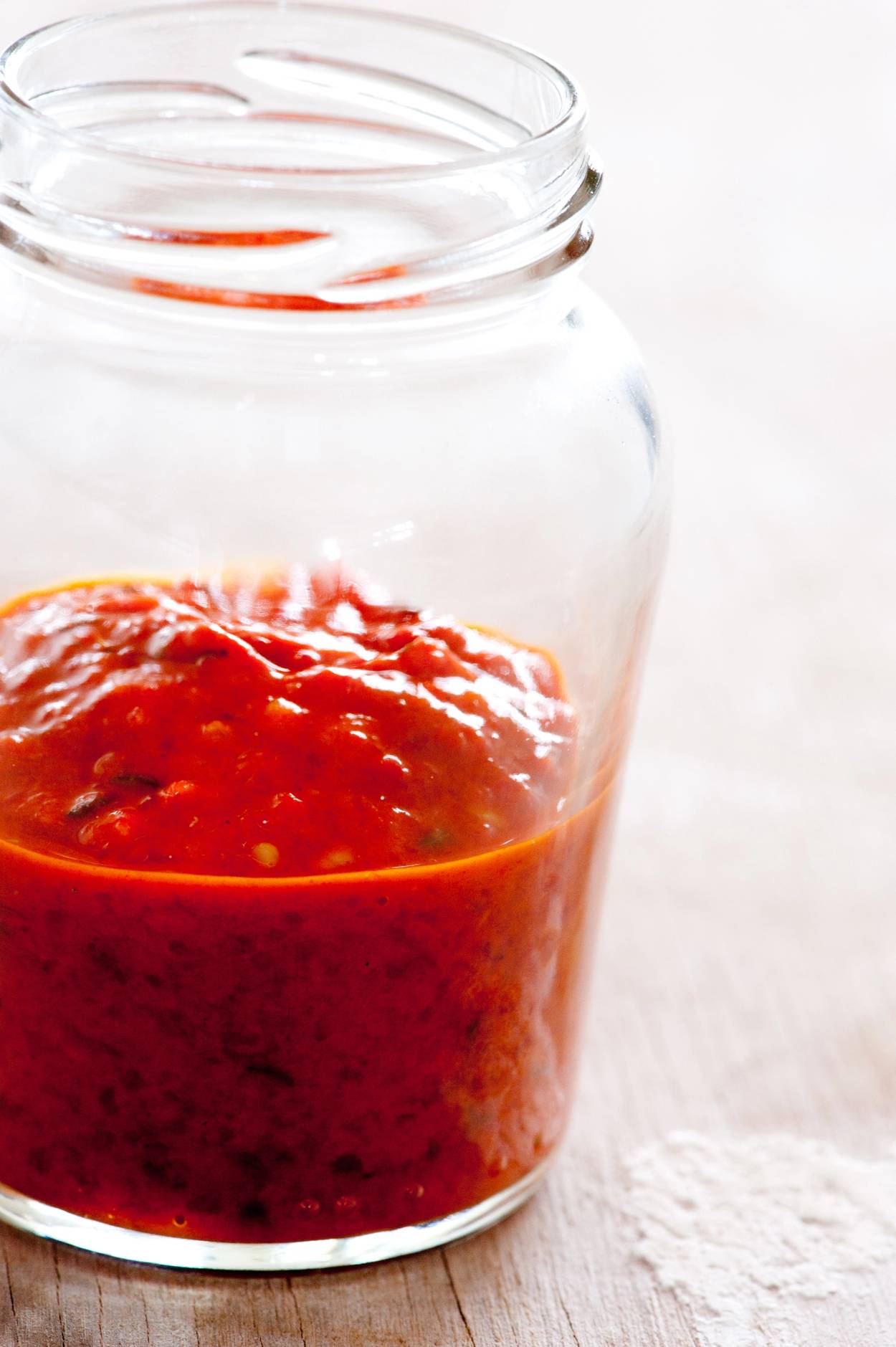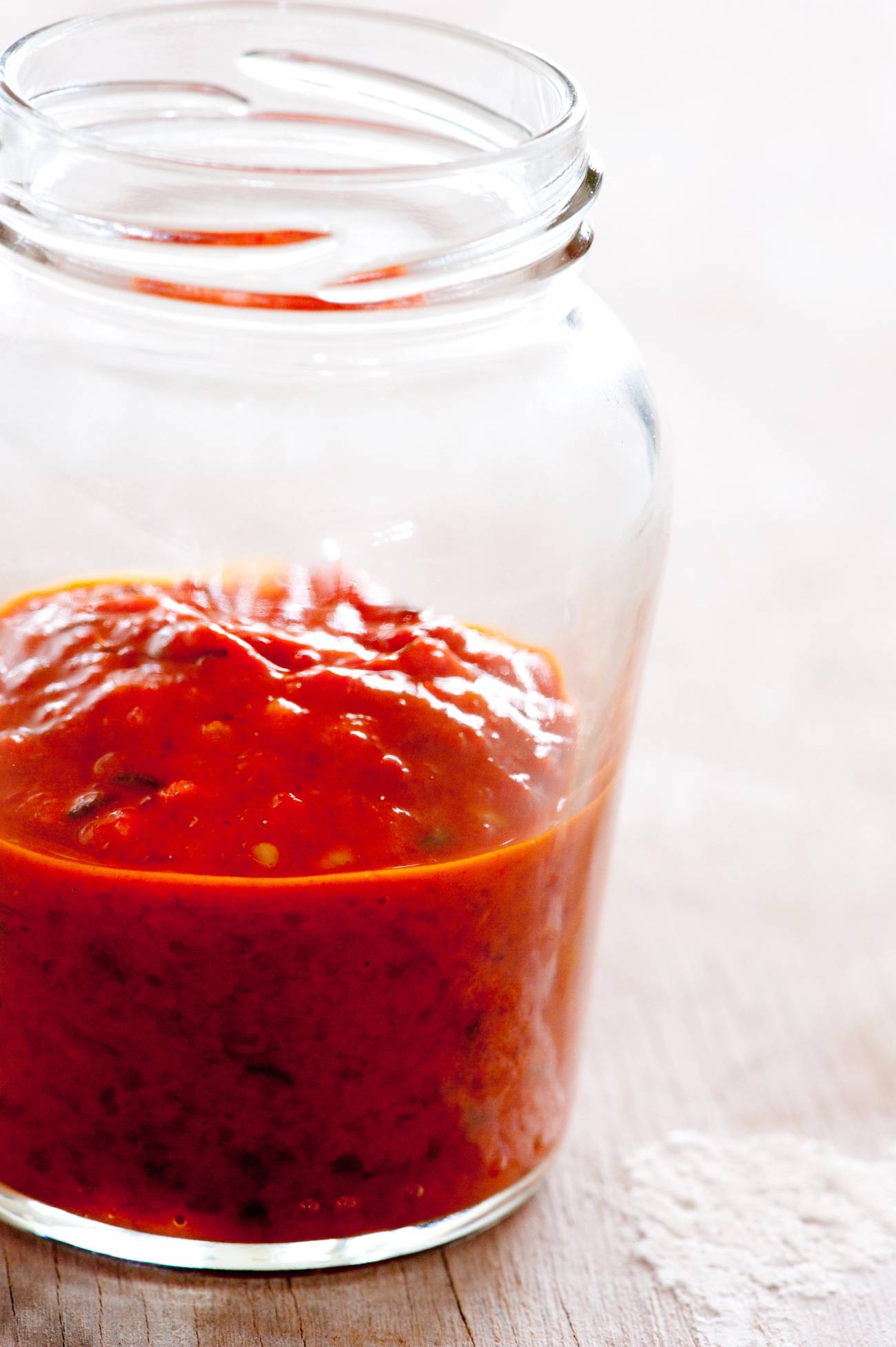Red Hot Chili Peppers
Popular in everything from stews and sauces to sandwiches and egg dishes, harissa has traveled far from its Tunisian roots




Jews have had a long love affair with harissa. The hot chili paste originally comes from Tunisia, where it is one of the most important condiments in the local cuisine. Chili peppers were introduced to Tunisia by the Spaniards in the 16th century, after the Conquistadors brought them to Spain following Christopher Columbus’ arrival in the New World. Today, harissa is widely used across the Maghreb from Libya to Morocco, as well as Israel.
The name harissa derives from the Arabic harassa—meaning “to pound” or “break in pieces.” Purists often make their own at home with fresh or dried chilis, often combined with sweet peppers. Tunisians add harissa to soups, salads, stuffed vegetables, vegetable or meat stews, egg dishes, and pasta sauces, and use it to flavor rice or couscous. Tunisian Jews are especially fond of mzora (a cooked carrot salad flavored with harissa and ground caraway) and aajlouk (a vegetable puree usually made with eggplant, carrots, zucchini, or pumpkin that is flavored with extra virgin olive oil, lemon juice, and harissa). Aajlouk is traditionally served as part of the kemia (Tunisian mezze). Harissa also appears in a variety of Tunisian Jewish soups, especially lablebi (chick pea soup) and zaria (tomato and noodle soup).
Harissa also adds spicy overtones to shakshuka—the well-known dish of eggs poached in a sauce made with onions, tomatoes, peppers, garlic, and spices—and ojja (scrambled eggs). It is also used to spice up the classic “Tunisian sandwich,” which is made with bread topped with sliced tomatoes, peppers, and cucumbers, plus tuna fish, boiled eggs, and olives. Another favorite Tunisian Jewish dish is poivrons “de la veuve”—deep-fried bell peppers stuffed with a mixture of soaked bread, eggs, harissa, and ground caraway; they are usually served alongside rice pilaf or couscous and a green salad. Couscous karouia au carvi—couscous flavored with tomato sauce, ground caraway, and harissa—is often served the day following Shabbat, as a way of using up any leftover couscous. For Passover, Tunisian Jews traditionally make msoki—an elaborate stew, along the lines of a very thick minestrone, made with shoulder of lamb, onion, garlic, carrots, leeks, turnips, kohlrabi, spinach, cabbage, broad beans, peas, fresh mint, coriander, parsley, rose harissa, and spices, with pieces of matzo soaked in the stew.
In Israel, harissa is sometimes used as a topping for sabich—an Israeli sandwich made with pita bread stuffed with fried eggplant, hard-boiled eggs, chopped onion, tomato, bell pepper and cucumber, chopped parsley, amba (mango pickle), and tahini—as well as shawarma, a popular street food usually made with thinly sliced lamb, beef, or mutton roasted on a spit, then stuffed inside pita bread along with pickled vegetables, diced tomatoes, cucumbers, hummus, tahini, and amba. Israelis also like to make filfel chuma or pilpel shuma— literally, pepper garlic in Hebrew—a garlic and chili sauce that originally comes from Libya, where it is called masee or filfil makbos. Fiffel chuma is usually made with a mix of crushed sweet and hot peppers and garlic and is very similar to harissa. Libyan Jews used it to flavor salads, fish, legumes, rice, and egg dishes.
Harissa can be a sauce or a paste that is sold in tubes, cans, bottles, or jars. The ingredients can vary widely depending on where it is made, even from cook to cook. In its simplest form it consists of crushed chilis, garlic, olive oil, and salt. More elaborate recipes include roasted red or baklouti peppers, fermented onions, tomato puree, ground caraway seeds, cumin, coriander, or lemon juice. Some versions include rose water or crushed rose petals—in which case it is called “rose harissa.” Harissa can vary in strength from fairly mild to super spicy.
Harissa is also very easy to make at home—see the recipe below.
If you want to experiment with harissa, you can add a little to salad dressings to give them a spicy kick. Harissa also goes very well with vegetable stews or roasted vegetables—especially zucchini, carrots, and fennel. Or you can add a little harissa to a basic tomato sauce for pasta, like they do in Tunisia. Harissa and a squeeze of lemon juice can also be stirred into yogurt, to make a simple sauce. It can also be used to marinate meat, fish, or chicken. A little rose harissa adds a wonderful flavor to hummus, falafel, or fried eggs. It is also a delicious marinade for fried eggplant or zucchini when combined with extra virgin olive oil, pomegranate molasses, honey, and a little tomato puree.
And it’s not just delicious. Harissa may have important health benefits. As the sauce contains capsaicin—the compound that makes chilis spicy—it may be beneficial for your health. Capsaicin is rich in antioxidants that may improve the health of your heart, boost your metabolism, and even reduce cancer-causing inflammation.
Paola Gavin is a food writer and author of four vegetarian cookbooks including Hazana: Jewish Vegetarian Cooking. Follow her on Instagram @paolagavin and on Twitter @paolagavinfood.